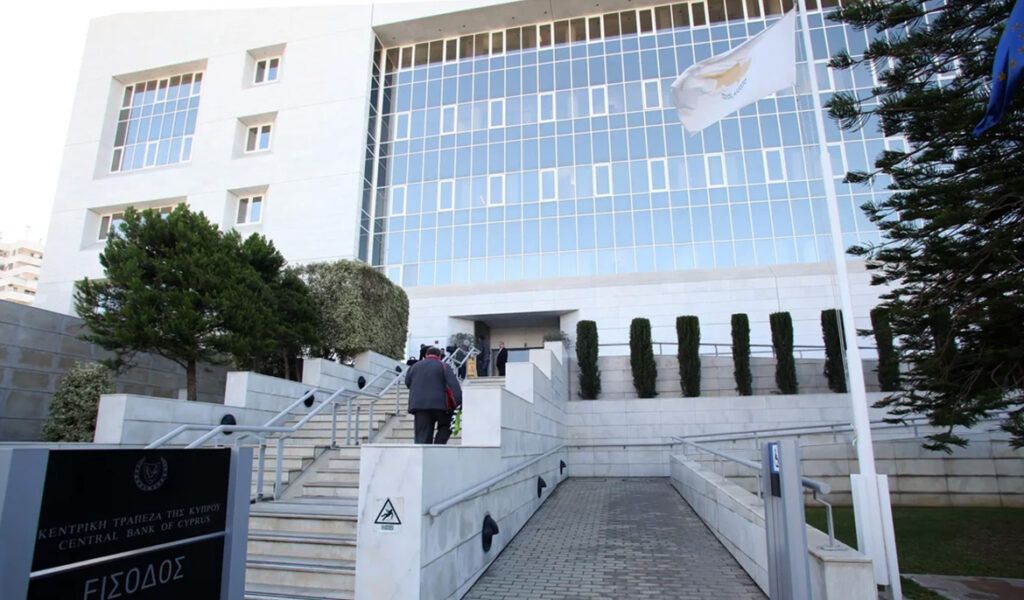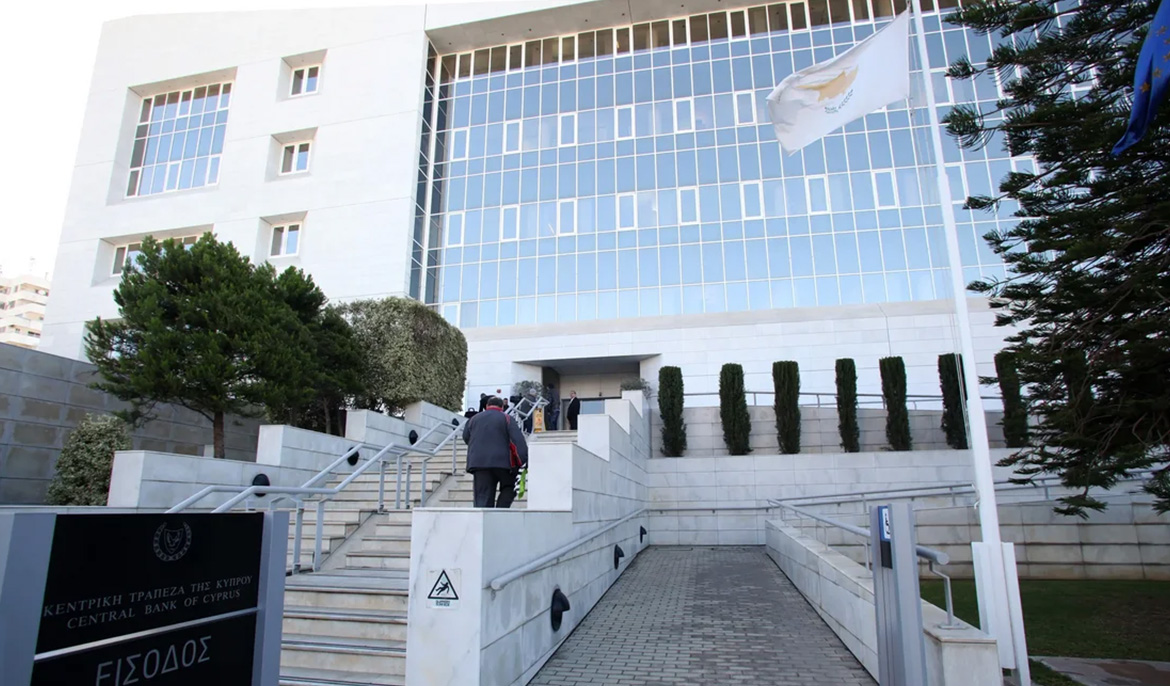The Central Bank of Cyprus (CBC) stated in its 2023 annual report, which was published this week, that increased bank profitability is not expected to alter the supervisory authorities’ prudent policy regarding dividend distribution.
The CBC highlighted that the management of non-performing loans (NPLs) remains a priority. It has signed an agreement with a consortium of experienced international firms to find a systemic solution that, with the existing available collateral, will lead to a more drastic reduction of NPLs across all banks.
The report covers the year 2023 and mentions economic developments in the first half of 2024. The forecasts for 2024, 2025, and 2026 are based on the CBC’s March 2024 projections.
The report indicates that the data reflects the stabilisation of the impact of ongoing sanctions against Russia on the turnover of financial and professional services. Regarding the conflict in the Middle East, any effects are described as limited.
In his introduction, former CBC governor Constantinos Herodotou stated that the Cypriot economy continues to show resilience despite ongoing challenges mainly stemming from unstable international geopolitical developments.
“The outlook is positive, indicating a strengthening of GDP growth and further easing of inflation,” he said.
He further explained that due to the successfully implemented economic, fiscal, and banking reforms and the rationalisation in the banking sector in recent years, the credit rating of the Republic of Cyprus has been at investment grade from all major rating agencies since last September.
“All necessary structural reforms must be implemented to make our country’s economy more productive and competitive,” he stated.
“The faster implementation of the Recovery and Resilience Plan in both Cyprus and other eurozone countries will contribute to increased investments for the green transition and digital transformation and further boost economic growth in the medium term,” Herodotou added.
GDP Growth Exceeds Expectations
Regarding the higher-than-expected GDP growth in the first quarter of 2024, at 3.5 per cent, the CBC notes that the recovery is mainly due to the rise in domestic demand, particularly private consumption and, to a lesser extent, investments.
This is supported by the increase in households’ real disposable income and the continued implementation of large private investments.
Additionally, net exports had a positive contribution due to the decrease in imports of goods for domestic consumption and the expansion of service exports (tourism and other services).
The sectors with the highest contribution to GDP growth were trade, transport, hotels, and restaurants (0.7 percentage points due to increased private consumption and tourism), construction (0.6 percentage points due to positive investment trends), professional activities (0.5 percentage points), and information and communication (0.4 percentage points due to the expansion of the technology sector).
According to the March 2024 forecasts, economic growth in 2024 is expected to reach 2.8 per cent, compared to 2.5 per cent in 2023, with further growth of 3.1 per cent in 2025 and 3.2 per cent in 2026.
The CBC attributes the GDP trend to the expected rise in domestic and external demand, supported by the recovery of households’ real disposable income.
The forecasted increase in service exports, particularly from 2025 onwards, reflects the recovery in tourism and the dynamic growth of sectors like technology, which have developed intensively in recent years through foreign investments.
However, uncertainty remains about the medium-term economic consequences of the conflict in the Middle East, as the impacts will depend on its duration and potential expansion. So far, any short-term effects are limited.
Labour Market
According to the report, the labour market continues to show significant resilience. In line with the positive GDP trend, employment rose by 2.2 per cent annually in the first quarter of 2024, while the unemployment rate fell to 6 per cent, from 2 per cent and 6.8 per cent, respectively, in the first quarter of 2023.
Unemployment is expected to decrease to 5.8 per cent of the workforce in 2024 compared to 6.1 per cent in 2023.
Reflecting the expected GDP growth, unemployment is forecasted to further decline to 5.6 per cent in 2025 and 5.3 per cent in 2026, approaching full employment conditions.
Lending and Deposit Rates
The CBC noted that during the first four months of 2024, domestic average lending rates stabilised at the high levels observed in 2023 after increases over the previous one and a half years.
Deposit rates remained relatively stable in early 2024 after a mild upward trend mainly in the second half of 2023. However, they continue to fluctuate at low levels, according to the supervisory authority.
Inflation
Domestic inflation continued its downward trend, averaging an annual increase of 2.2 per cent from January to May 2024, compared to 5.4 per cent in the same period of 2023.
The decline in domestic inflation is mainly due to the effect of the eurozone’s unified monetary policy combined with developments in energy prices and government relief measures.
Inflation is expected to further decrease compared to 2023, averaging 2 per cent and 1.9 per cent in 2024-2025 and 2026, respectively.
The further decline in inflation is expected to result from the impact of the unified monetary policy, corrections in energy prices, and the anticipated normalisation of both corporate profit margins and wage increases.
Core inflation, which excludes energy and food, is expected to decrease further compared to 2023, averaging 2.6 per cent, 2.3 per cent, and 2.2 per cent in 2024, 2025, and 2026, respectively.
Regarding the likelihood of deviations from the baseline forecast scenario, the CBC notes that these tend to be slightly downward for GDP and balanced for inflation.
The main downside risks for GDP are related to the negative economic impact of ongoing geopolitical tensions and uncertainty about external demand trends.
For inflation, upside risks arise from potentially higher-than-expected energy prices, while downside risks are linked to a stronger-than-expected impact of the ECB’s monetary policy.
Banking Sector
The banking sector has proven in recent years to be resilient against unexpected shocks, achieving a positive and steadily upward trajectory despite intense and successive challenges from the health crisis, geopolitical developments in the form of wars, and strong and persistent inflationary pressures.
Specifically, as in previous years, liquidity coverage remained satisfactory in 2023, with the ratio at 358 per cent in December 2023, almost double the eurozone average.
Additionally, the Common Equity Tier 1 (CET1) ratio stood at 20.4 per cent in December 2023, compared to the European average of 16 per cent in the same period.
“The solid indicators of the domestic banking system create prospects for effectively addressing even potential extreme disruptions,” the former CBC governor noted in his introduction.
Focus on NPLs
In December 2023, non-performing loans (NPLs) further decreased, accounting for 7.9 per cent of the total loan stock. Loans classified in Stage 2, which are considered a precursor to NPLs, also decreased, amounting to 7 per cent of total loans during the same period.
“These figures confirm that the asset quality of banks has not been affected by the successive challenges recorded in 2023,” the CBC said in its report.
However, managing NPLs remains a priority due to the ongoing uncertain external economic and geopolitical environment and the fact that risk reduction from NPLs on bank balance sheets has not been uniform, mainly benefiting large banks.
The CBC has signed an agreement with a consortium of experienced international firms to find a systemic solution that, with the existing available collateral, will lead to a more drastic reduction of NPLs across all banks. The project is in an advanced stage of study and analysis.
“The CBC’s consistent position has been and remains the existence of a stable, balanced, and comprehensive legislative framework for resolving existing and potential new NPLs, including foreclosures as a last resort, ensuring the financial and economic stability of the country,” the report stated.
Bank Profitability and Dividends
It is worth noting that increased bank profitability due to the sharp rise in reference rates since July 2022 is also attributed to the significant increase in interest income on the high liquidity of banks, which stood at 358 per cent as mentioned earlier, a substantial part of which comes from placements with the ECB.
The increased profitability of banks will not affect the supervisory authorities’ maintenance of a prudent policy regarding dividend distribution, with the main priority being the further strengthening of the capital adequacy of all banks, the report states.
The CBC noted that in 2023, only one Cypriot bank was approved to distribute dividends.
Challenges: Climate Change and Technology
According to the CBC, during the year under review, other challenges persisted that leave no room for complacency among supervisory and regulatory authorities.
Special mention was made of the risk from climate change, which is rapidly worsening and requires immediate and collective effort from all stakeholders to address.
Efforts were intensified in 2023 to integrate this risk into the strategic planning and decision-making processes of banks.
“In this context, banks’ efforts, regardless of size, must be intensified with the primary goal of completing their internal assessment and determining the potential impact of climate change across the spectrum of their activities,” the CBC said.
The report also highlights the risk of technology, information, and communications, which remains highly relevant amid banks’ intensified efforts for digitalisation and due to cyber threats.
“The efforts of supervised institutions to safeguard against these risks must be intensified, and actions must be taken to ensure the adequacy and continuous updating of internal processes and preventive measures,” the report concluded.



